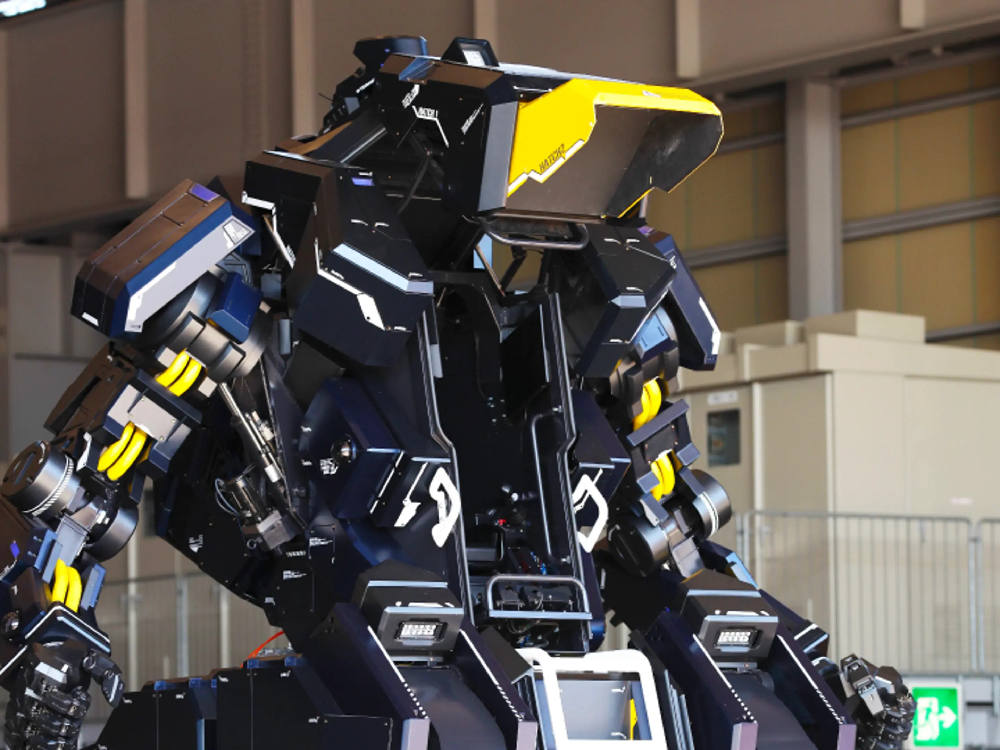Carding 4 Carders
Professional
- Messages
- 2,729
- Reaction score
- 1,521
- Points
- 113
Why Archax is the best thing that could happen in the world of robotics?
Japanese giant human-controlled Gundam robots are certainly impressive, but why not move around on four wheels instead of walking? This is exactly the opportunity provided by the Archax robot, which can transform from a robot to a vehicle.

For those who aren't familiar: Gundam is a Japanese sci - fi media franchise based on huge "mecha" robots controlled in real time by an onboard pilot. Despite the fact that most of these robots exist only in anime and manga, some groups have successfully created real robots in the style of Gundam. One of these robots is Archax, produced by Tsubame Industries, a startup based in Tokyo.
The robot pilot is located in the central cabin, which is accessed by stairs. The cab is located between the robot's two arms. Inside, the pilot is surrounded by four video screens that display images from cameras located in front, behind and on the sides of the robot. The screens also show data on speed, tilt angle, and battery charge.
The robot is controlled via a touch interface, two joysticks on the armrests and two pedal controls. Each robot arm is controlled separately, and the hands and fingers can move independently of each other.
The Archax doesn't walk, but it has four legs, each ending in a wheel. In vehicle mode, the front legs move forward and the rear legs move backward, which allows the robot to move at speeds of up to 10 km/h.
According to the developers, the robot weighs 3.5 tons and has a height of 4.5 meters in robot mode. It consists of welded aluminum alloy plates and iron pipes covered with fiberglass panels.
Archax was designed primarily as a high-tech toy for the wealthy. Last month, Tsubame Industries began accepting pre-orders from Japanese buyers. The price of the robot is about 400 million yen (approximately 2.7 million US dollars). It is planned to release the first batch of five robots, the production of which will take from 12 to 18 months.
Japanese giant human-controlled Gundam robots are certainly impressive, but why not move around on four wheels instead of walking? This is exactly the opportunity provided by the Archax robot, which can transform from a robot to a vehicle.

For those who aren't familiar: Gundam is a Japanese sci - fi media franchise based on huge "mecha" robots controlled in real time by an onboard pilot. Despite the fact that most of these robots exist only in anime and manga, some groups have successfully created real robots in the style of Gundam. One of these robots is Archax, produced by Tsubame Industries, a startup based in Tokyo.
The robot pilot is located in the central cabin, which is accessed by stairs. The cab is located between the robot's two arms. Inside, the pilot is surrounded by four video screens that display images from cameras located in front, behind and on the sides of the robot. The screens also show data on speed, tilt angle, and battery charge.
The robot is controlled via a touch interface, two joysticks on the armrests and two pedal controls. Each robot arm is controlled separately, and the hands and fingers can move independently of each other.
The Archax doesn't walk, but it has four legs, each ending in a wheel. In vehicle mode, the front legs move forward and the rear legs move backward, which allows the robot to move at speeds of up to 10 km/h.
According to the developers, the robot weighs 3.5 tons and has a height of 4.5 meters in robot mode. It consists of welded aluminum alloy plates and iron pipes covered with fiberglass panels.
Archax was designed primarily as a high-tech toy for the wealthy. Last month, Tsubame Industries began accepting pre-orders from Japanese buyers. The price of the robot is about 400 million yen (approximately 2.7 million US dollars). It is planned to release the first batch of five robots, the production of which will take from 12 to 18 months.
